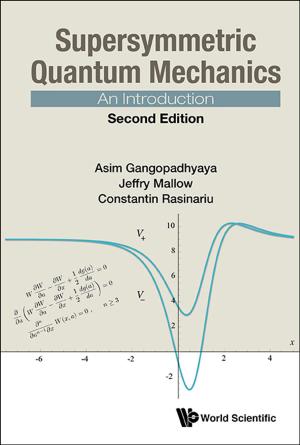| Author: | Walter A Harrison | ISBN: | 9789814365628 |
| Publisher: | World Scientific Publishing Company | Publication: | July 24, 2000 |
| Imprint: | WSPC | Language: | English |
| Author: | Walter A Harrison |
| ISBN: | 9789814365628 |
| Publisher: | World Scientific Publishing Company |
| Publication: | July 24, 2000 |
| Imprint: | WSPC |
| Language: | English |
Quantum mechanics is widely recognized as the basic law which governs all of nature, including all materials and devices. It has always been essential to the understanding of material properties, and as devices become smaller it is also essential for studying their behavior. Nevertheless, only a small fraction of graduate engineers and materials scientists take a course giving a systematic presentation of the subject. The courses for physics students tend to focus on the fundamentals and formal background, rather than on application, and do not fill the need. This invaluable text has been designed to fill the very apparent gap.
The book covers those parts of quantum theory which may be necessary for a modern engineer. It focuses on the approximations and concepts which allow estimates of the entire range of properties of nuclei, atoms, molecules, and solids, as well as the behavior of lasers and other quantum-optic devices. It may well prove useful also to graduate students in physics, whose courses on quantum theory tend not to include any of these applications. The material has been the basis of a course taught to graduate engineering students for the past four years at Stanford University.
Topics Discussed: Foundations; Simple Systems; Hamiltonian Mechanics; Atoms and Nuclei; Molecules; Crystals; Transitions; Tunneling; Transition Rates; Statistical Mechanics; Transport; Noise; Energy Bands; Electron Dynamics in Solids; Vibrations in Solids; Creation and Annihilation Operators; Phonons; Photons and Lasers; Coherent States; Coulomb Effects; Cooperative Phenomena; Magnetism; Shake-off Excitations; Exercise Problems.
Contents:
- Foundations
- Simple Systems
- Hamiltonian Mechanics
- Atoms and Nuclei
- Molecules
- Crystals
- Transitions
- Tunneling
- Transition Rates
- Statistical Mechanics
- Transport
- Noise
- Energy Bands
- Electron Dynamics in Solids
- Vibrations in Solids
- Creation and Annihilation Operators
- Phonons
- Photons and Lasers
- Coherent States
- Coulomb Effects
- Cooperative Phenomena
- Magnetism
- Shake-off Excitations
- Exercise Problems
Readership: Graduate students in engineering, materials science, chemistry and physics.
Quantum mechanics is widely recognized as the basic law which governs all of nature, including all materials and devices. It has always been essential to the understanding of material properties, and as devices become smaller it is also essential for studying their behavior. Nevertheless, only a small fraction of graduate engineers and materials scientists take a course giving a systematic presentation of the subject. The courses for physics students tend to focus on the fundamentals and formal background, rather than on application, and do not fill the need. This invaluable text has been designed to fill the very apparent gap.
The book covers those parts of quantum theory which may be necessary for a modern engineer. It focuses on the approximations and concepts which allow estimates of the entire range of properties of nuclei, atoms, molecules, and solids, as well as the behavior of lasers and other quantum-optic devices. It may well prove useful also to graduate students in physics, whose courses on quantum theory tend not to include any of these applications. The material has been the basis of a course taught to graduate engineering students for the past four years at Stanford University.
Topics Discussed: Foundations; Simple Systems; Hamiltonian Mechanics; Atoms and Nuclei; Molecules; Crystals; Transitions; Tunneling; Transition Rates; Statistical Mechanics; Transport; Noise; Energy Bands; Electron Dynamics in Solids; Vibrations in Solids; Creation and Annihilation Operators; Phonons; Photons and Lasers; Coherent States; Coulomb Effects; Cooperative Phenomena; Magnetism; Shake-off Excitations; Exercise Problems.
Contents:
- Foundations
- Simple Systems
- Hamiltonian Mechanics
- Atoms and Nuclei
- Molecules
- Crystals
- Transitions
- Tunneling
- Transition Rates
- Statistical Mechanics
- Transport
- Noise
- Energy Bands
- Electron Dynamics in Solids
- Vibrations in Solids
- Creation and Annihilation Operators
- Phonons
- Photons and Lasers
- Coherent States
- Coulomb Effects
- Cooperative Phenomena
- Magnetism
- Shake-off Excitations
- Exercise Problems
Readership: Graduate students in engineering, materials science, chemistry and physics.















